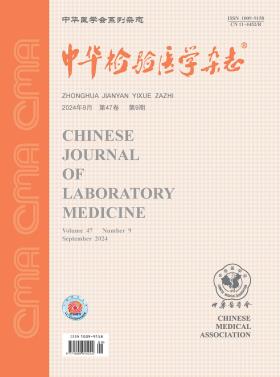应用新指南CLSI EP7-A3评价肌酐测量中的干扰因素
Q4 Health Professions
引用次数: 0
摘要
目的探讨应用美国临床实验室标准协会(CLSI) EP7-A3文件测定肌酐(Cr)的干扰因素。方法根据CLSI EP7-A3文件,实验当天使用新鲜血清(无溶血、无血脂、无黄疸),通过配对差异实验确认干扰物质,剂量效应实验采用点对点分析法明确干扰物质差异。结果甘油三酯(16.94 mmol/L)、盐酸多巴酚丁胺(4.01 μmol/L)、抗坏血酸(298 μmol/L)对Cr的测定无干扰,以游离胆红素(684 μmol/L)、偶联胆红素(684 μmol/L)、羟苯磺酸钙(144 μmol/L)和血红蛋白(10 g/L)为最大干扰浓度进行剂量效应试验。结论根据EP7-A3,对肌酐测定的干扰因素进行评价是有价值的。关键词:干涉实验;肌酸酐本文章由计算机程序翻译,如有差异,请以英文原文为准。
Evaluation of interference factors in creatinine measurement by using new guideline CLSI EP7-A3
Objective
To investigate the interfering factors in the determination of creatinine(Cr) using the American Clinical Laboratory Standards Association (CLSI) EP7-A3 document.
Methods
According to the CLSI EP7-A3 document, fresh serum (no hemolysis, lipemia, and jaundice) was used on the day of the experiment and confirmed the interfering substances through the pairing difference experiment and the point-to-point analysis method was used in the dose effect experiment to clarify the difference of interfering substances.
Results
Triglyceride (16.94 mmol/L), dobutamine hydrochloride (4.01 μmol/L), ascorbic acid (298 μmol/L) did not interfere with the determination of Cr. Free bilirubin (684 μmol/L), conjugated bilirubin (684 μmol/L), calcium hydroxybenzene sulfonate (144 μmol/L) and hemoglobin (10 g/L) were used as the maximum concentrations of interferences for the dose effect test, the results showed that the above interferences had negative interference on the determination of Cr.
Conclusion
According to EP7-A3, it is valuable to evaluate the interference factors of creatinine determination.
Key words:
Interference experiment; Creatinine
求助全文
通过发布文献求助,成功后即可免费获取论文全文。
去求助
来源期刊

中华检验医学杂志
Health Professions-Medical Laboratory Technology
CiteScore
0.40
自引率
0.00%
发文量
8037
期刊介绍:
 求助内容:
求助内容: 应助结果提醒方式:
应助结果提醒方式:


